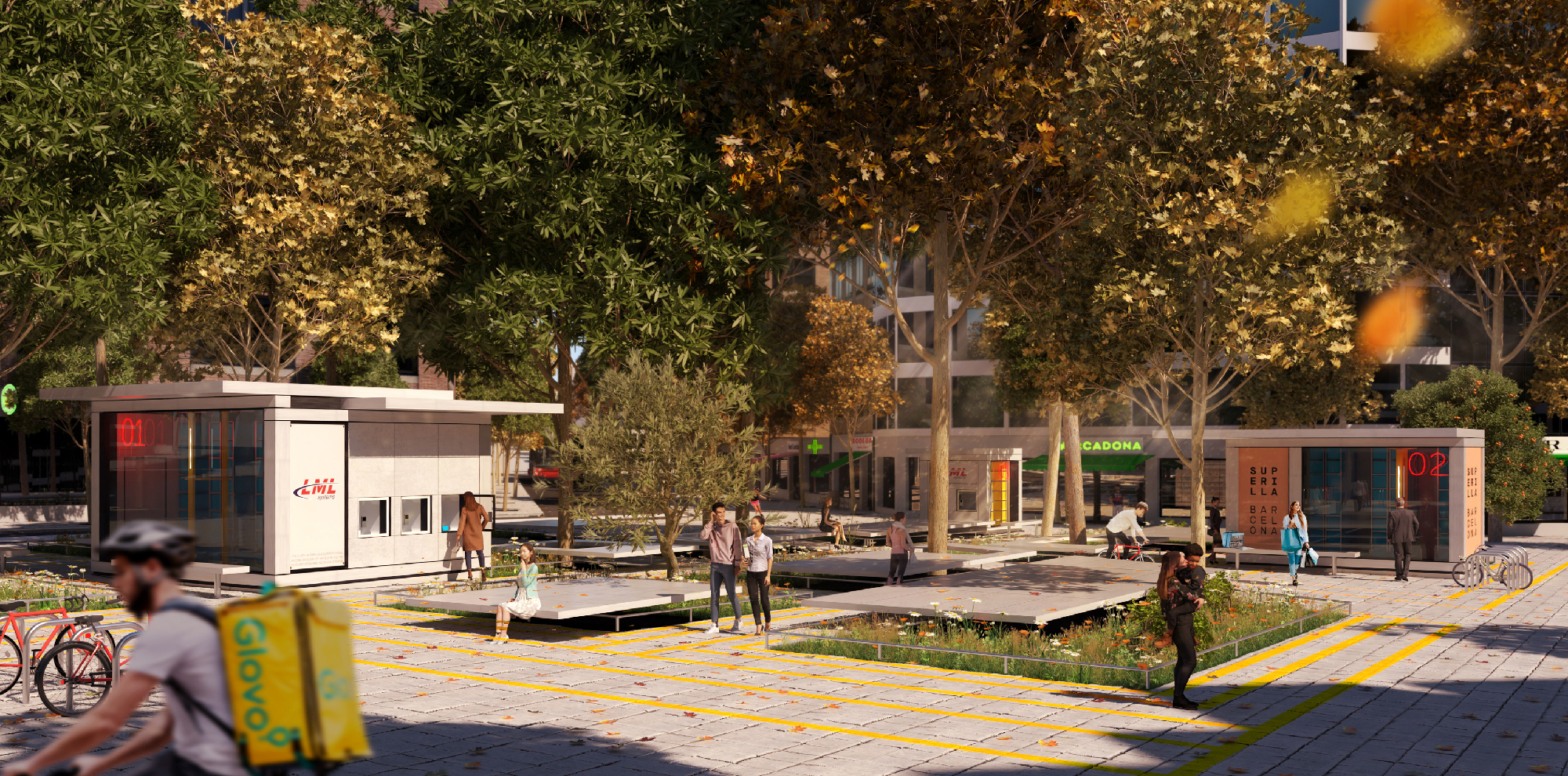︎︎︎
LML Systems
Barcelona, Spain 2023
The demand for online
delivery and last-mile logistics is increasing rapidly. It is projected to
cause a 30% increase in urban traffic by 2030.
The demand for online
delivery is increasing rapidly. It is projected to
cause a 30% increase in urban traffic by 2030.
The
last-mile delivery industry is challenged by traffic congestion, manual
operation risks, pavement encroachment, theft, riots and weather condition.
It also supposes a risk to operators and other citizens.
In
cities like Barcelona, the last mile delivery industry is further challenged
with masterplans like the superblock. This ongoing plan prioritizes people over
cars. While reducing traffic from within the superblocks, it is adding traffic
to the main roads.
With
these challenges, how will the Last Mile Industry adapt?
Some initiatives involve air carriers such as drones, however flying objects
brings risks to the citizen and are unable to transport the needed loads for
common parcel delivery
Therefore,
LML system proposes a dedicated underground infrastructure for the delivery of
goods and services, which connects individuals and businesses.
For
this, LML uses a swarm of robots that travel along its underground
infrastructure. These robots are responsible for picking up and delivering
goods and services throughout the city.
The
exchange of goods happens through the community delivery stations located along
the Superblock´s axis. These stations enable package exchange across the LML
network.
To further extend LMLs network, LML System includes:
1) A
Secondary network to extend the network within the superblock streets and
its complimentary stations.
2) A
network of warehouses evenly distributed along the city to provide extra
storage space to the city.
These
elements remove most carrier traffic from the streets by distributing traffic below ground, leaving more space for pedestrian
to enjoy the city.
The
most advanced stage of LML includes:
3) Vertical shafts to reach to the interior
spaces such as homes, office spaces and retail.
4) Dedicated
warehouses which LML users can personally use as the future building storage
rooms.
LML enables new services such as
the automated delivery of healthcare products and personal baggage, and
streamlines everyday use cases such as package delivery, food delivery, and
furniture management.
LML
Systems modularity enables it to adapt to the needs of existing and newly
planned cities, aimed to free the urban space from carrier parcel flow
and help make cities more livable.
team: Pratik Borse, Jordi Muro Naya, Gabriel Muñoz Moreno
location: Barcelona, Spain
client:
undisclosed
year: 2023
program: infrastructure / last-mile logistics













